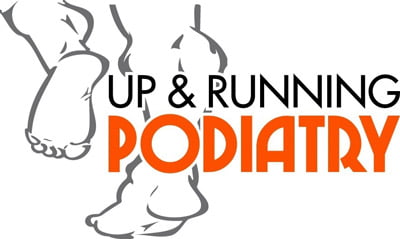Are You Feeling Frustrated by Shin Pain?
Whether you’re a weekend runner or an athlete looking to perform at your best, few things are more frustrating than shin pain, which prevents you from training or competing at your highest level.
Chances are you’ve tried everything to get your body back on track from icing to calf sleeves, new shoes and changing up your training. It’s easy to feel frustrated and out of ideas when nothing works.
At Up and Running Podiatry, we’ve been supporting our Melbourne clients in overcoming their lower leg pain and foot problems with a specialised focus on sports and biomechanical assessment. With our help, you can go back to enjoying each step, wherever it’s taking you.
- Melbourne’s podiatry professionals
- Work with the general public and elite athletes
- No referral required to make a booking
- All private health insurance companies accepted
Don’t let shin splints set your training back by months or affect your enjoyment levels.
Book an appointment online at one of our multiple clinic locations in Port Melbourne, Elsternwick and Williamstown. Or, speak to a team member at 1300 185 335 today.
What Are Shin Splints?
Are you finding your shins throbbing or aching before or after exercise?
If you feel pain inside your lower leg along your shin bone (tibia), you may have shin splints.
Shin splints, also known as Medial Tibial Stress Syndrome (MTSS), are commonly experienced by people who train or compete regularly in sports, including runners, dancers and athletes.
Other shin splint symptoms include:
- Mild swelling
- Sore to touch
- Dull and aching pain
Caused by increased stress and muscle traction on the inside of the tibia, your shin splint pain may often feel worse at the start and finish of exercise but decrease during physical activity. Without proper treatment, you may eventually experience pain during activity and even at rest.
PLEASE NOTE: Sharp shin pain that does not decrease and remains at a specific point may indicate a stress fracture. Other conditions may also have symptoms similar to shin splints, so reach out and speak to an Up and Running team member at 1300 185 335 for support.
Shin Splint Causes and Risk Factors
The most common cause of shin splints is overuse. In other words, you’re doing too much, too soon.
Injuries can occur due to training or exercising too hard, as well as from regular daily activities. This condition is commonly experienced in running-based or weight-bearing activities including running, AFL, soccer, netball and dancing.
Whatever activity makes you sweat, high load and repeat volume cause the shin bone and surrounding soft tissue to enter a state of constant fatigue. And since a fatigued body has a lowered ability to absorb the shock of each step or movement, you can end up injured.
Other factors that can cause increased strain on the shin include:
- Excessive foot pronation (flat feet)
- Inadequate stretching or warming up
- Running or jumping on hard surfaces
- Worn-out shoes or footwear
- Muscle fatigue
- Training errors and training intensity
Shin Splint Treatment Options
Treatment for Medial Tibial Stress Syndrome (MTSS) is based on symptomatic relief, identifying risk factors and treatment of pathology. To avoid a potential stress fracture, it’s best to visit a podiatrist and begin a treatment plan ASAP.
At Up and Running Podiatry, we take the time to understand your lifestyle and exercise routine to get to the root cause of your injury. From there, we’ll suggest a personalised treatment plan (one size doesn’t fit all here) that may include:
- Rest, ice and anti-inflammatory medication
- Avoidance of aggravating activity and running of soft surfaces
- Cross-training (swimming or cycling)
- Correctly fitted running shoes (we can help figure out your best fit)
Prevention is better than a cure. That’s why we also offer a range of treatment options to reduce your risk factors, including:
- Orthotics
- Correcting training errors
- Foot strapping to support the arch
- CAM boot or immobilisation (resistant cases)
To treat pathology and stimulate healing, the following may be considered:
- Shockwave therapy (don’t worry, it sounds scarier than it is)
- Massage and dry needling
- Injection therapies
Frequently Asked Questions About Shin Splints
If your shin pain is gone after two to four weeks of treatment, you may be able to start your usual activities again at low intensity. In most cases, runners who rest their shins and seek treatment as soon as symptoms begin can return to pain-free running sooner.
Since shin splints are caused by inflammation of the muscle and tendons around the shin bone, thin acupuncture-like needles can help muscles relax while promoting blood flow, oxygen and nutrient circulation to support healing.
